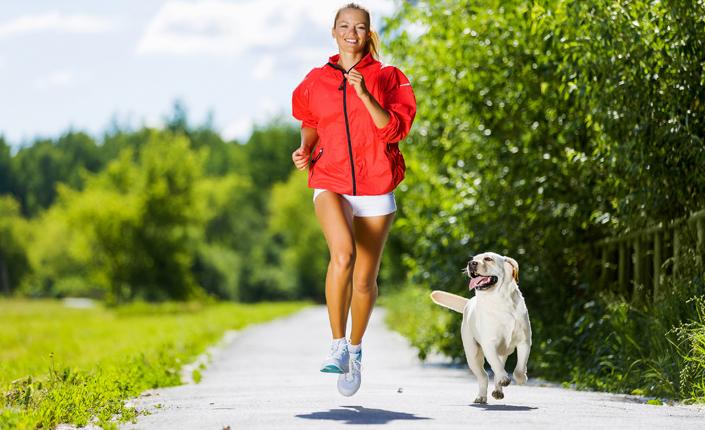
10 Safety Tips For Running With Your Dog
06/03/15
Printer-friendly version
Running with your dog can be a great way for both of you to stay in shape, but it’s important to consider some key safety tips prior to heading out. For starters, you should always consult your veterinarian before including your dog in your exercise regime and avoid running on hot days. Read on for more tips on running with your pooch!
- Consider your dog’s age and breed: If your dog is young and still developing, running may not be a safe exercise option for them. Similarly, running can be hard on older dog. No matter their age, try to run on trails/gravel paths as opposed to concrete whenever possible. In addition, different breeds respond better to hard exercise – like running – than other breeds. Many small breeds are not equipped for running, while most medium to large sized working breeds are.
- Speak to your veterinarian first: If you think your dog is ready to begin running, book a physical examination with your veterinarian. This will allow him or her to determine if your dog has any physical issues that could limit their ability to start a new exercise regime.
- Start slow: Before beginning a running routine with your dog, start by introducing long walks and slowing increasing your pace with each outing. After a while, you can run for short periods of time, returning to a walk after a few minutes. Slowly increase the duration of each running sprint as time goes on. This will reduce the risk of injury and make the new experience more enjoyable for your dog.
- Keep your dog on a leash: This will keep them safe from traffic, cyclists and other runners. It will also prevent them from running off after a wild animal or other dog. If you’re running on the road, running against traffic will allow you to see whether you need to move off the road for oncoming cars or trucks.
- Train your dog to run on one side: Keeping your dog on one side of you at all times will avoid having them run in front of you which could cause you to trip and hurt both of you.
- Avoid running in the heat and bring lots of water: Your dog’s fur will cause them to get hot much quicker than you. Exercising in hot weather can be distressing to your dog if not done safely. In addition to bringing lots of water for them and you, try running during cooler times of the day such as early morning and later in the evening. Don’t forget to take regular water breaks to keep your pooch cool and hydrated.
- Monitor your dog: Watch your dog for signs of heat exhaustion such has heavy panting and excessive salivating, disorientation or vomiting. Also be weary of your dog slowing down or limping as this could be an indication of a paw or muscle injury. Stop and inspect your dog immediately if you notice any of these symptoms, and never push your dog to continue running if they are uncomfortable.
- Poop and Scoop: Think of other runners and don’t forget to bring bags to clean up after your pet. Doing so will also avoid the potential of a hefty fine for leaving a mess in your neighbourhood.
- Don’t forget the cool down: Ending your run with a short walk will help your dog cool down and reduce stress on their body.
- Examine your dog post-run: Check your dog thoroughly after returning from your run for cut or injured paw pads, burrs, and ticks. Following this, ensure they have access to plenty of water and give them some space to rest.
